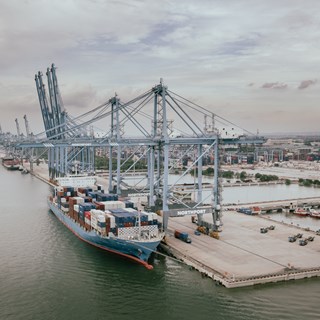
Green hydrogen
Is stewardship of water the missing piece of the puzzle for green hydrogen?
15 December 2021
Green hydrogen is poised to revolutionise renewable energy for some key industry sectors - but in Australia, these enormous water demands are also poised to accelerate some of our existing challenges in providing water security for industry and regions in a way that is affordable and sustainable.
Green hydrogen requires green inputs, and with water as the key raw material, requiring around 9 litres of water per kilogram of hydrogen produced, it seems we should be sourcing this water thoughtfully. What could this look like?
It might be easy to assume existing nearby water supplies should be able to handle early pilot phases of production and that in the future, ‘desalination plants or similar’ could cover the rest. Still, technical and financial feasibility is unlikely to be that simple, and the question remains - is this ‘green’ enough for the coming market?
Perhaps the answer lies in the concept of stewardship, where the blind consumption of a commodity gives way to an engaged approach to responsible management of it instead. In regions where hydrogen production will be adding to a long list of increasing water demands from population and industry, water availability can’t stay as a project-specific or site-specific consideration. Water represents an interconnected system, a shared challenge, and a collective opportunity.
We are already seeing our customers across industries increasingly asking for support to understand the broader risks associated with the water systems they operate within - with an eye on governance, stakeholder resilience, environmental impact, and community risks, in addition to the real-world security of the water supply needed. This trend seems likely to accelerate as enormous industrial demands continue to come online with a foreseeable market expectation of being genuinely sustainable.
There are likely to be a whole range of potential options for water sourcing that could supplement new supplies - especially in the interaction with other local water systems. The cheapest of these options is nearly always freeing up more water by finding opportunities to optimise demands and eliminate embedded wastage in nearby supplies. Still, there are also opportunities for industrial and municipal scale wastewater reuse and sharing with much lower
energy and cost intensity than sourcing new water. No doubt, freshwater sources will need to be an essential part of the solution but working collaboratively with other regional stakeholders to map out constraints and put all options on the table as a first step is likely to be strategic from a risk and financial perspective.
While the mix of opportunities and barriers is likely to be unique to each location, a common thread is likely to be the need to be planning well ahead. A lesson that the water industry has learned through experience is that last-minute reactive solutions to water shortages are rarely feasible and never economic.
With careful up-front consideration, it is exciting to think that the green hydrogen industry could avoid the trap of treating water as the ‘missing piece’ and instead show leadership in water management by acting as thoughtful stewards of their supply chain.

Adam’s 17 years of detailed water management, efficiency analysis and auditing has provided him with industry leading skills and experience related to technical water efficiency and resource management. He is driven to find the convergence of business investment opportunities and water risk mitigation in a way that provides tangible and useful advice. A dynamic approach to innovation with a strong sense of economic and
environmental feasibility continues to drive Adam to achieve ever more insightful and practical solutions with measurably worthwhile results.
Comfortable with the management of both small and large projects, he has completed hundreds of water efficiency audits throughout Australia, developed and managed industry-leading research into water use, managed strategic water use planning for large organisations and provided training and education to resource efficiency specialists in the commercial and government sectors.
As co-chair of the AWA’s Water Efficiency Specialist network and with a breadth of expertise spanning a range of sectors, Adam is a key industry expert in water use and management across various combinations of industrial, commercial, and government sites and precincts.

Jaret Fattori
Jaret Fattori's article in Port Strategy discusses how ports are adapting to climate change and IFRS S-2 regulations. Emphasising the shift towards sustainability through digital integration, decarbonisation, and innovative fuel alternatives, he explores the significant role of collaboration in advancing port sustainability and innovation.

Jaret Fattori
The regulatory landscape in Canada is evolving rapidly, reflecting a growing awareness of the need for more sustainable practices and responsible business conduct.

Greg Fisk
Major Projects Lead and Senior Principal Consultant, Greg Fisk, discusses the growing need for sector-specific guidance for marinas and boat yards, in-light of increasing regulation to decarbonise industries.

Asimina Voskaki
What are the implications of extreme heat, and how can we build heat resilience in our cities? With heat waves projected to increase in frequency, intensity, and duration, cities must develop an approach to reduce heat-related impacts. To develop such an approach, we should invest in proactive action, building anticipation, enhancing preparedness levels, and ensuring an efficient response mechanism.